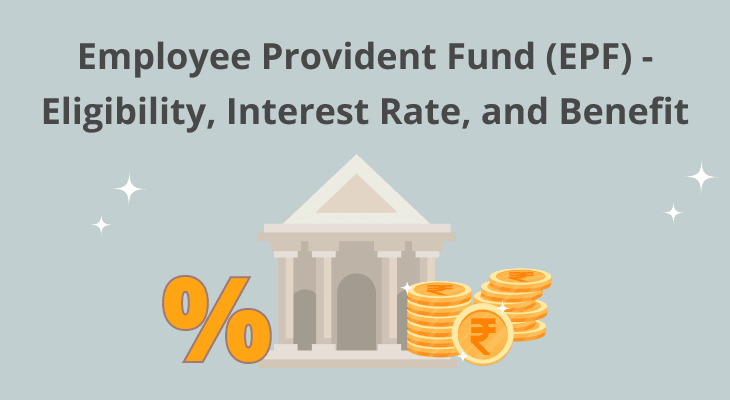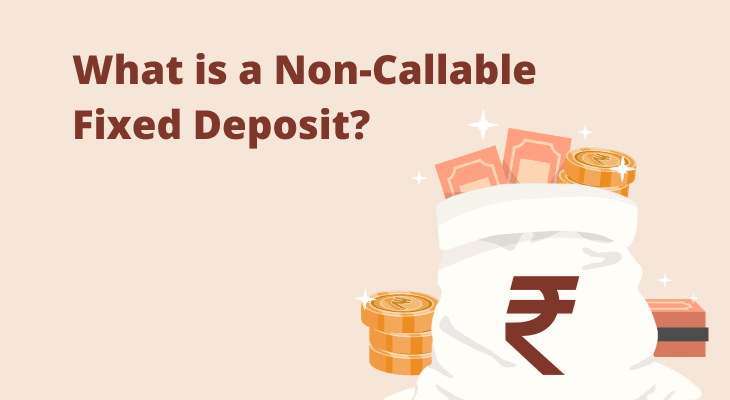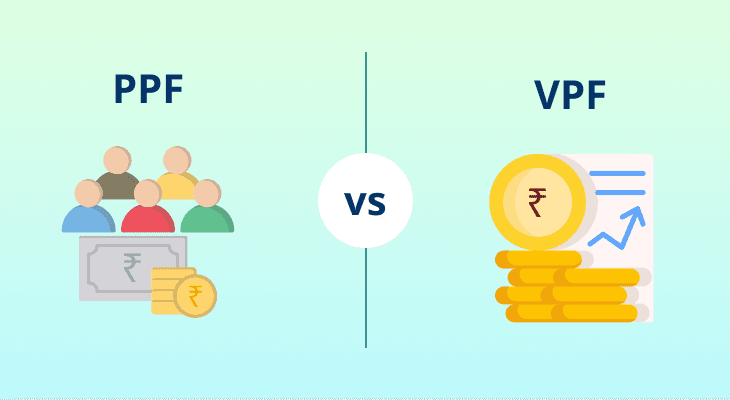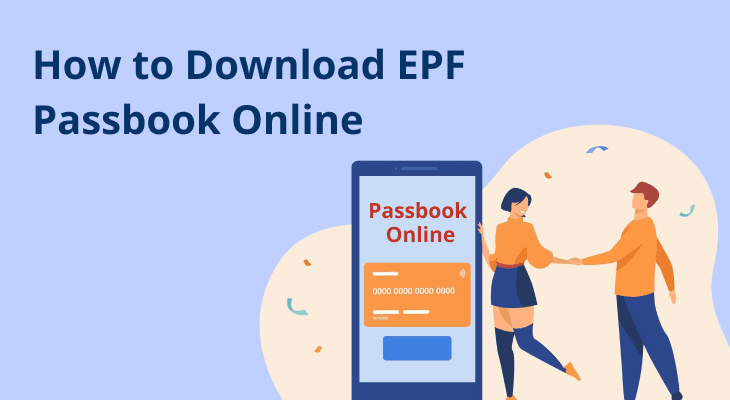
Employee Provident Fund (EPF) - Eligibility, Interest Rate, and Benefits
Saving for the future is essential, and the Employees’ Provident Fund (EPF) serves as a reliable and beneficial savings scheme for salaried individuals. Governed by the Employee Provident Fund Organization (EPFO), this scheme not only helps in building a retirement corpus but also offers financial security in times of need. Let us delve into the details of EPF, including its eligibility, interest rate, and benefits.
What is Employees’ Provident Fund (EPF)?
The Employees’ Provident Fund (EPF) is a government-backed savings scheme designed to help salaried employees save for their retirement. Both employees and employers contribute a specific percentage of the employee’s salary to the EPF account monthly. Over time, these contributions, along with accrued interest, form a significant financial cushion.
Understanding the Employees’ Provident Fund Organization (EPFO)
The Employee Provident Fund Organization (EPFO) is the statutory body under the Ministry of Labour and Employment, Government of India, that manages the corpus. Established to promote social security, the EPFO ensures timely contributions, maintains records, and disburses claims effectively.
Schemes Offered Under EPFO
The EPFO manages several schemes, including:
Employee Provident Fund (EPF):
A retirement savings scheme for salaried employees. Employees and employers contribute 12% of the employee's basic salary and dearness allowance, ensuring regular savings throughout their career.
Employee Pension Scheme (EPS):
Provides pension benefits post-retirement. Pension eligibility starts after completing a minimum of 10 years of service, ensuring long-term financial security. A portion of the employer’s contribution goes into the EPS.
Employee Deposit Linked Insurance (EDLI):
Offers life insurance coverage to employees. The nominee receives up to ₹7,00,000 in the event of the employee's untimely demise, offering crucial financial support.
Objectives of EPFO
The primary objectives of EPFO are:
- Ensuring social security for employees by promoting regular savings.
- Providing financial support during retirement or emergencies.
- Managing contributions efficiently to deliver timely benefits.
- Offering life insurance and pension benefits under its various schemes.
EPF Eligibility Criteria
To avail of the benefits of EPF, individuals must meet the following eligibility criteria:
- Employment in a Registered Establishment: The scheme applies to organizations with 20 or more employees.
- Income Threshold: Employees earning up to ₹15,000 per month are mandatorily covered. However, individuals earning more can voluntarily opt for EPF.
- Age Limit: While there is no specific entry age limit, the scheme is particularly beneficial for those in the early stages of their careers. Under the EPFO rules, 58 years is considered the age of retirement for employees.
EPF Interest Rate and Calculation
The EPF interest rate is determined annually by the government and is based on market conditions and the earnings of the EPFO. The interest rate for the Employees Provident Fund (EPF) for the financial year 2024-25 is 8.25%. The interest is compounded monthly but credited to the account at the end of the financial year.
How is Interest on EPF Calculated?
Interest on EPF is calculated monthly but credited to the account annually. The formula for calculating EPF interest is:
Interest = (Opening Balance + Monthly Contributions) × Interest Rate / 12
Example:
Suppose your EPF opening balance is ₹1,00,000, and your monthly contributions (employee + employer) total ₹5,000. Here's how the monthly interest would be calculated:
(₹1,00,000 + ₹5,000) × 8.25% / 12
= ₹1,05,000 × 0.0825 / 12
= ₹721.88 (Monthly interest)
At the end of the year, the total interest earned is credited to your account, further compounding your savings. This consistent growth ensures a robust retirement corpus.
Benefits of Employees’ Provident Fund (EPF)
The benefit of EPF extends beyond retirement savings. Here’s why EPF is an essential part of financial planning:
- Tax Benefits: Contributions to EPF qualify for deductions under Section 80C of the Income Tax Act.
- Long-term Savings: Regular contributions over the years create a significant retirement corpus.
- Financial Security: EPF can be partially withdrawn for emergencies such as medical expenses, education, or home purchase.
- Insurance Coverage: The EDLI scheme offers life insurance to employees.
- Pension Benefits: Under the EPS, employees receive a monthly pension post-retirement.
- Employer Contribution: Employers contribute an equivalent amount, enhancing the overall savings.
- Voluntary Contribution: EPFO allows employees’ to contribute above the 12% of monthly salary, which is beyond the amount required under the EPFO rules. This helps employees’ build a larger corpus for their retirement kitty.
- Portability: With the Universal Account Number (UAN), employees can easily transfer their EPF account when switching jobs.
Thus, the Employees’ Provident Fund (EPF) is more than just a savings scheme; it’s a comprehensive financial security plan for salaried individuals. With benefits like tax exemptions, retirement savings, and life insurance, EPF ensures peace of mind for employees and their families. By understanding its eligibility criteria, EPF interest rate, and benefits, employees can make informed decisions to secure their future. Start contributing to your EPF today—it’s not just a statutory requirement but a pathway to financial independence.


